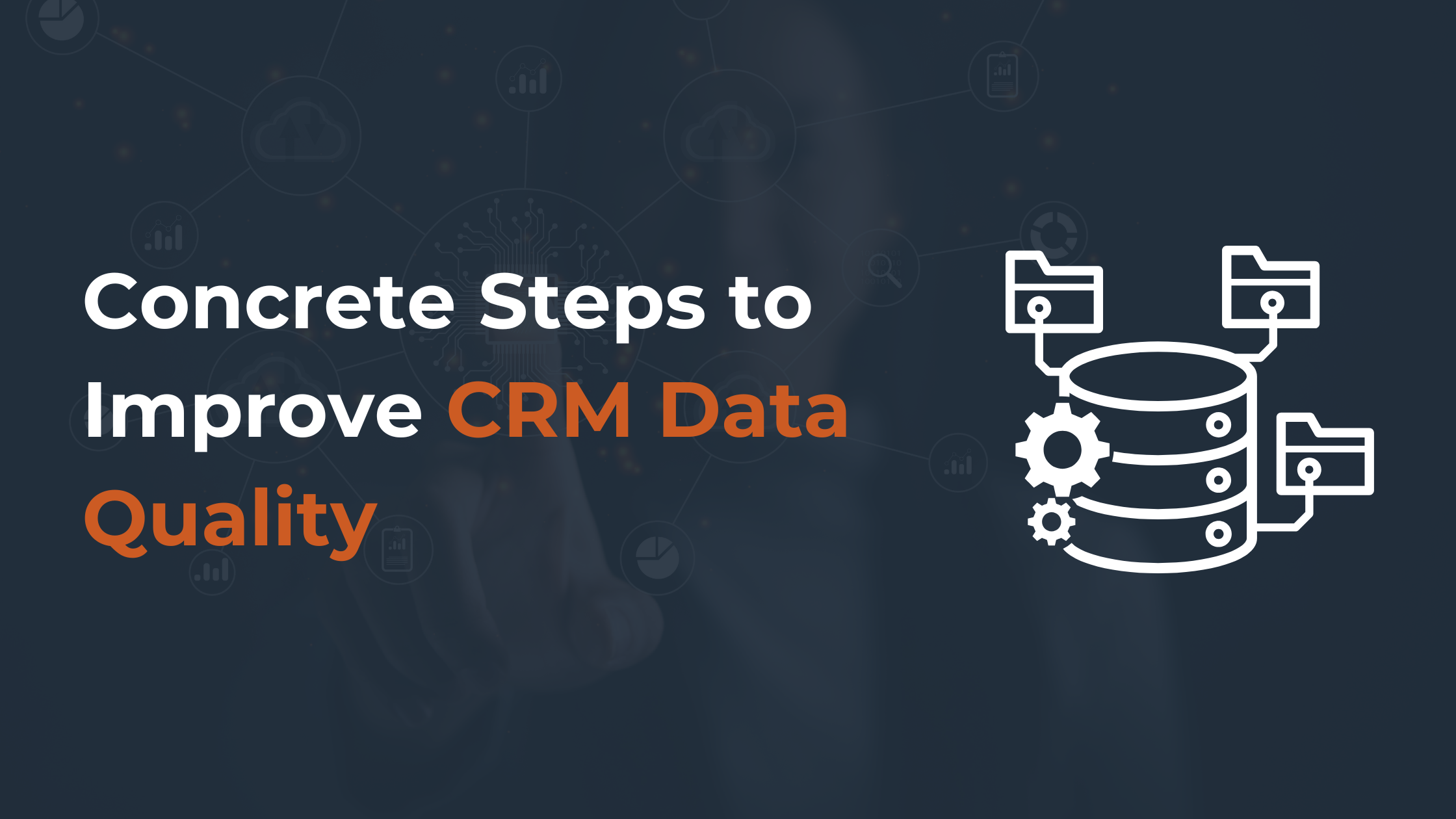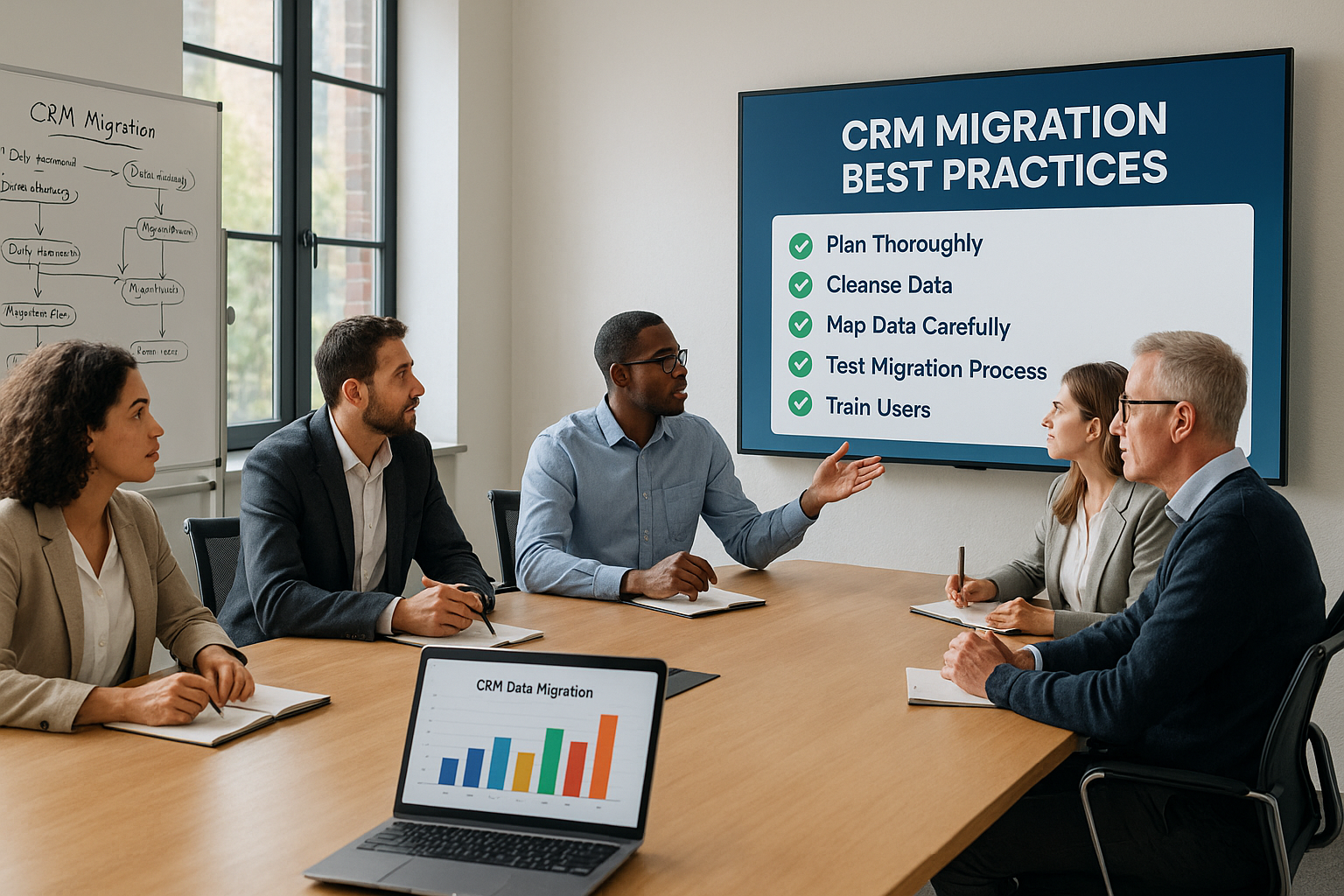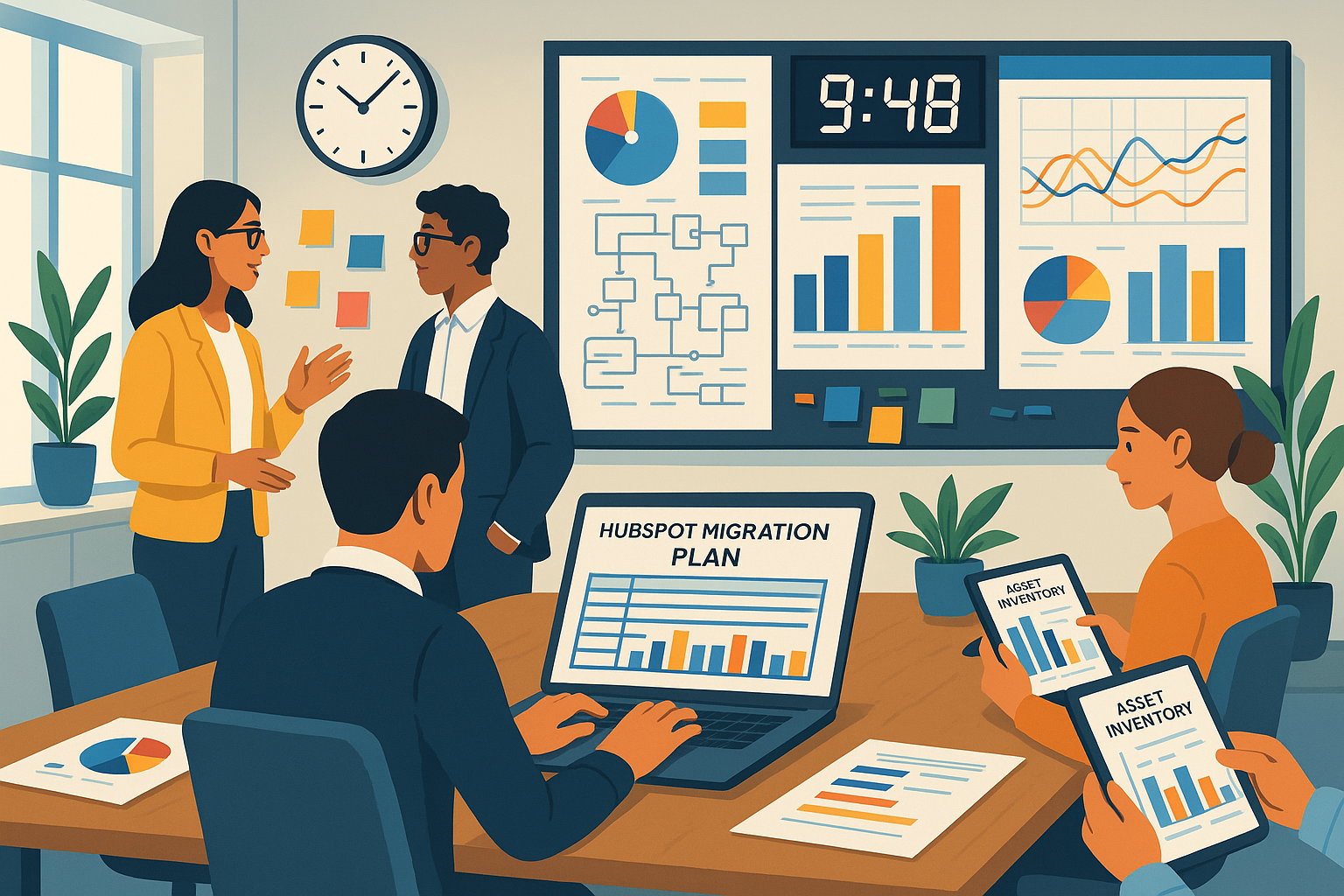Table of Content
- Why CRM Data Quality Matters for Every Department
- Common Causes of Bad CRM Data and How to Avoid Them
- Creating a CRM Data Quality Checklist
- Improve CRM Data Capture from the Start
- Choose the Right CRM Data Quality Solutions and Tools
- Building a Data Ownership Culture Across Teams
- Measuring Progress with Regular CRM Data Quality Assessment
- Turning CRM Data Quality into a Long-Term Business Advantage
Why CRM Data Quality Matters for Every Department
CRM data is not just a sales tool. Every department can make better decisions, streamline processes, and foster more robust customer relationships when the data in your CRM is accurate, comprehensive, and updated. On the other hand, low-quality data leads to missed opportunities, inefficiencies, and misunderstandings throughout the company.
- Clean data is essential for sales to follow leads, rank opportunities, and confidently predict income. Duplicate or inaccurate records may lead to missed opportunities and ineffective outreach.
- To create relevant campaigns, marketing relies on accurate segmentation and trustworthy customer insights. If data is outdated or inconsistent, marketing efforts risk being irrelevant or worse, damaging the customer experience.
- Customer support teams require centralized, reliable records to promptly address problems and offer individualized assistance. Support staff spend more time searching for solutions and less time assisting clients when data is fragmented or incomplete.
- CRM data is essential for resource planning, compliance, and accurate billing in finance and operations. Contact or transaction history errors may lead to costly rework, financial hazards, or incorrect reporting.
The whole customer lifecycle is impacted by the quality of CRM data. The entire organization suffers when the foundation is weak because each department that interacts with the customer journey depends on a single source of truth.
Common Causes of Bad CRM Data and How to Avoid Them
Unfortunately, insufficient, inconsistent, or just incorrect data is a problem for many organizations. When you understand the root causes of bad CRM data is the first step to prevent and improve CRM data quality.
1. Errors in manual data entry
When service agents, marketers, or sales representatives manually enter data, typos, formatting errors, or fields that are skipped are unavoidable.
Ways to prevent it: Utilize drop-down menus, required fields, and validation rules to standardize inputs. When feasible, automate the collection of CRM data by integrating call logs, emails, and forms into your CRM.
2. Record duplication
Teams become confused, and outreach is wasted when the same consumer appears more than once. Systems that aren't connected or lists that are imported by many departments without deduplication frequently result in duplicates.
Ways to prevent it: Use tools for detecting duplicates and perform deduplication procedures on a regular basis. Integrate your CRM with all customer touchpoints and centralize data imports.
3. Outdated data
Email addresses, phone numbers, and work titles belonging to customers are always changing. CRMs can fill up with outdated or unnecessary data if updates are not made on a regular basis.
Ways to prevent it: Set up regular data cleansing. Make use of enrichment tools that add the most recent data to customer profiles automatically. After every engagement, remind the support and sales personnel to update their records.
4. Unstructured information
Inconsistencies and gaps are caused by notes dispersed over spreadsheets, emails, or unconnected technologies. Teams lose the "single source of truth" when customer insights are stored outside of the CRM.
Ways to prevent it: Enter all client data into the CRM. Define precise procedures for data storage and implement rules that forbid the use of additional systems.
5. Insufficient governance
When accountability for data quality is unclear, it slips through the gaps. Departmental inconsistencies may arise from each team adhering to its own set of regulations.
Ways to prevent it: Assign a governance team or data steward. Establish guidelines for reporting, updates, and data entry. Regular training is necessary to ensure that all users are aware of CRM best practices.
Creating a CRM Data Quality Checklist

A CRM data quality checklist ensures your team consistently enters, manages, and maintains information that can be trusted across the business.
Define Your Required Data Fields for Every Record
Not all information is equally important. Identify the essential fields, such as name, email, phone number, company, and role, that must be captured for every customer record. Setting mandatory fields helps eliminate incomplete entries and ensures that each record has enough information to be actionable.
Standardize Naming Conventions and Field Formats
Inconsistent entries like “NY” vs. “New York” or “Inc.” vs. “Incorporated” create confusion and complicate reporting. Standardize naming conventions for companies, contacts, and addresses, and use consistent formats for fields like dates, phone numbers, and postal codes. Where possible, apply drop-down lists or automated formatting rules to keep data uniform.
Set Rules for Duplicate Prevention and Merging
Duplicate records waste time and distort metrics. Define clear rules for identifying, preventing, and merging duplicates before they spread across your CRM. Leverage built-in CRM tools or third-party apps that automatically detect potential duplicates at the point of entry. Establish a process for resolving conflicts, such as which record should be considered the “master.”
Schedule Regular Data Reviews and Cleanups
Even with strong entry rules, customer data quality degrades over time. Job changes, company updates, and shifting contact details mean today’s accurate record may be outdated tomorrow. Create a regular schedule for reviewing and cleaning your CRM data. Combine automated checks with manual data audits to catch both technical and contextual errors.
A well-structured CRM checklist is more than a set of rules; it’s an ongoing commitment to keeping CRM data usable, reliable, and valuable for every department.
Improve CRM Data Capture from the Start

The best way to improve CRM data quality is to capture clean, accurate information right from the beginning. When data enters the system correctly, it reduces the need for later cleanups and prevents errors from compounding as records move through the funnel.
Identify All CRM Data Entry Points Across Your Funnel
Data can enter your CRM from multiple sources, such as web forms, sales calls, email campaigns, chatbots, events, or third-party integrations. Map out every entry point across your funnel so you can establish quality standards consistently, regardless of where the information comes from.
Use Validation Rules in Forms to Prevent Incomplete Entries
One of the simplest ways to maintain clean CRM data capture is to enforce validation rules at the form level. For example, make email fields require a valid format, ensure phone numbers include country codes, and set mandatory fields for critical details. This step helps prevent incomplete or unusable records from being added in the first place.
Integrate CRM with Lead Generation Tools to Sync Data Automatically
When lead generation platforms, landing pages, or marketing automation systems are disconnected from your CRM, manual transfers introduce errors. By integrating these tools, you ensure that customer data flows directly into the CRM, maintaining accuracy and reducing duplication.
Minimize Manual Input by Automating Form Population
Manual entry is prone to mistakes and slows down teams. Features like auto-fill, dropdowns, and pre-populated fields based on existing data reduce errors and save time. The less typing required, the better the accuracy.
Train Staff on Proper Data Entry and CRM Usage Standards
Technology alone can’t solve customer data quality issues. Your team must understand why accurate data matters and how to enter it correctly. Provide training on naming conventions, duplicate prevention, and field requirements. Reinforce these standards regularly to create accountability and consistency.
Choose the Right CRM Data Quality Solutions and Tools
-1.png?width=1600&height=900&name=HubSpot%20and%20NetSuite%20(1)-1.png)
No matter how well your teams follow data entry standards, technology is essential to improve CRM data quality. The right platforms automate cleansing, prevent duplication, and unify information from multiple systems into a reliable single source of truth. Below are some CRM data quality solutions and their contributions to stronger CRM data management.
ConnectWise
ConnectWise is a business management platform designed for IT service providers, MSPs, and software companies. Beyond its CRM functions, it offers extensive automation for ticketing, quoting, billing, and project management. From a data quality standpoint, ConnectWise centralizes customer interactions across sales and support, reducing silos and minimizing inconsistencies between departments. Its customizable workflows and built-in reporting highlight gaps or duplicates, helping teams quickly resolve errors. For businesses heavily dependent on recurring service contracts, ConnectWise ensures customer records remain accurate and linked across the entire client lifecycle.
Epicor
Epicor is an ERP system with integrated CRM capabilities that excel in industries such as manufacturing, distribution, retail, and automotive. Its strength lies in aligning front-office and back-office data, ensuring customer details match operational records like orders, shipments, and invoices. By connecting CRM to ERP functions, Epicor prevents errors caused by disconnected systems (e.g., mismatched customer IDs or outdated shipping addresses). Data validation and automated workflows also reduce manual entry errors. For organizations where customer engagement is tied closely to inventory or supply chain operations, Epicor provides a reliable way to keep data synchronized and actionable.
Microsoft Dynamics
Microsoft Dynamics 365 is one of the most robust platforms for CRM and ERP combined, with strong native features for data governance. It includes duplicate detection, required field rules, business logic validation, and AI-driven insights to enrich and maintain customer data. Because it integrates deeply with Microsoft tools like Outlook, Teams, SharePoint, and Power BI, customer information flows seamlessly across communication, collaboration, and reporting channels. Dynamics also supports role-based access controls and audit trails, ensuring sensitive customer data is accurate, secure, and compliant. This makes it a popular choice for enterprises that need both scalability and advanced governance.
NetSuite
NetSuite CRM, part of the broader Oracle NetSuite ERP suite, provides an all-in-one solution that unifies sales, marketing, service, and finance under one system. Its biggest advantage for customer data quality is eliminating silos. Customer data is automatically tied to transactions, billing, and inventory management. NetSuite’s workflow automation helps ensure records are kept up to date, while dashboards and reporting tools highlight inconsistencies or missing information. For growing companies, NetSuite reduces the risks of fragmented data by offering one consistent view of customer interactions, from lead to renewal, across every department.
Snowflake
Snowflake is a cloud-based data platform designed for storing, consolidating, and analyzing large volumes of data from multiple sources, including CRMs. While it isn’t a CRM itself, Snowflake plays a crucial role in data quality by acting as a central hub where data can be cleaned, enriched, deduplicated, and standardized before being pushed into CRM systems. Its scalability and advanced analytics capabilities make it especially powerful for organizations with complex tech stacks or large customer databases. Snowflake also supports real-time data sharing and integration with BI tools, enabling companies to monitor data quality continuously and make data-driven improvements at scale.
Building a Data Ownership Culture Across Teams
Maintaining clean CRM data is a shared commitment across all departments, not just IT. The CRM becomes a reliable source of information when teams comprehend the effects of their data habits. By demonstrating how bad data impacts marketing, sales, and service results, you can promote accountability. Assign data stewards to uphold standards and keep an eye on quality. Provide data entry, formatting, and duplicate prevention guidelines for the entire company and incorporate them into onboarding and refresher training.
Various departments in many organizations use CRM software that is customized to meet their unique requirements. For instance, customer service uses Zendesk, marketing uses HubSpot, and sales uses Salesforce. Although this method can streamline individual processes, it frequently leads to numerous issues. These disparate systems can communicate in real time or through scheduled syncs thanks to CRM integration solutions. Platforms can automatically share information like contacts, accounts, leads, and activity history.
More than 55 CRM programs can be connected to by sophisticated integration platforms like SyncMatters, which offer automated, flexible, and secure synchronization. We guarantee that every system maintains its functionality while adding to a precise, cohesive dataset by supporting bi-directional updates, conflict resolution, and data validation rules.
Measuring Progress with Regular CRM Data Quality Assessment
Organizations can track developments, spot new problems, and make sure teams are continuously adhering to CRM best practices by conducting regular assessments of the quality of CRM data. Establish important data quality metrics first, such as the percentage of complete records, duplicate rate, contact information accuracy, and frequency of out-of-date entries. Track these metrics over time using dashboards and automated reports to show stakeholders trends and trouble spots.
Sharing outcomes with teams demonstrates the impact of their work and strengthens accountability. A culture of data ownership is promoted, and continuous adherence to standards is encouraged when staff members witness gains in data completeness, accuracy, and usability.
Organizations can maintain a solid, actionable CRM that promotes more productive customer interactions and improved overall performance by systematically measuring progress.
Turning CRM Data Quality into a Long-Term Business Advantage
Scalability and expansion are supported by maintaining high CRM data quality. Well-governed data guarantees that new teams, systems, and procedures inherit precise and consistent information as businesses grow. Maintaining accurate, current, and reliable customer records across all departments is ensured by routine CRM data verification.
By prioritizing the quality of customer data, you can turn your CRM into a sustainable business advantage. Consistent investments in clean, standardized, and current data help businesses improve customer insights, increase productivity, and strengthen their position in the market. Businesses can promote sustainable growth by integrating data quality into their corporate culture.




